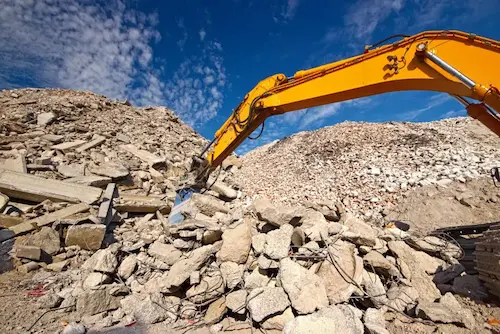Understanding the Demolition Process: From Planning to Execution

We recognize that demolition is a critical and complex phase in construction projects.
Our extensive experience has allowed us to develop a comprehensive understanding of this process, from meticulous planning to precise execution.
This article will guide you through the essential stages of demolition, ensuring you grasp the nuances involved in this vital aspect of construction.
1. Initial Assessment and Planning
The first step in any demolition project involves a thorough initial assessment. We begin by evaluating the structure to be demolished, considering its size, location, and the materials used in its construction. This assessment helps us understand potential hazards and challenges that may arise during the demolition process. We conduct detailed surveys and inspections to identify structural issues, hazardous materials like asbestos, or other factors that could impact the demolition.
Once we understand the structure, we move on to the planning phase. This involves creating a detailed demolition plan outlining the required methods and equipment. We consider various factors, such as the building’s proximity to other structures, the need for dust and noise control, and the potential impact on the surrounding environment. Our planning process also includes obtaining necessary permits and ensuring compliance with local regulations and safety standards.
2. Method Selection
Selecting the appropriate demolition method is crucial for the success of the project. We choose from several techniques based on the specific requirements of each project. The most common demolition methods include:
1. Mechanical Demolition: This method involves using heavy machinery, such as excavators and bulldozers, to tear down structures. It is ideal for large buildings and offers efficiency in terms of speed and cost.
2. Manual Demolition: Manual demolition may be more appropriate for smaller structures or those located in sensitive areas. This method involves using hand tools and labor to dismantle the building piece by piece.
3. Implosion: Implosion is a controlled demolition technique for large, complex structures. It involves placing explosives at specific points to collapse the building inward. This method requires precise planning and execution to ensure safety and minimize damage to surrounding areas.
4. Deconstruction: Deconstruction is an environmentally friendly method focused on salvaging and reusing materials. It involves carefully dismantling the structure to recover valuable materials for reuse or recycling.
3. Safety Measures
Safety is a top priority at Milidaro. Our demolition projects adhere to stringent safety protocols to protect workers, the public, and the environment. We conduct comprehensive safety training for our team and ensure all safety equipment is in place and functioning correctly.
Before demolition, we establish safety zones around the site to prevent unauthorized access. We also implement measures to control dust, noise, and debris, minimizing the impact on the surrounding area. Our team conducts regular safety inspections throughout the demolition process to promptly address potential hazards.
4. Execution and Monitoring
The execution phase involves the demolition work, guided by the previously established plans and methods. At Milidaro, our team meticulously follows the demolition plan, using the selected methods and equipment to carry out the work efficiently and safely.
Throughout the demolition process, we continuously monitor progress and address any issues. Our team can handle unexpected challenges, such as structural complications or unforeseen hazards. We communicate clearly with all stakeholders to ensure the project remains on track and promptly address concerns.
5. Waste Management and Site Clearance
After the demolition is complete, managing the resulting waste is a crucial step. We prioritize efficient waste management to minimize the environmental impact of our projects. We sort and separate materials for recycling or disposal, following local regulations and best practices for waste management.
Site clearance involves removing all debris and ensuring the area is left in a safe and clean condition. We conduct thorough site inspections to confirm that all debris has been removed and that the site is ready for the following construction or development phase.
6. Regulatory Compliance
Compliance with local regulations and industry standards is integral to our demolition process. We ensure that all aspects of the demolition project meet regulatory requirements. This includes obtaining the necessary permits, adhering to safety standards, and following environmental guidelines.
We work closely with local authorities and regulatory bodies to ensure our projects comply with all relevant laws and regulations. Our commitment to regulatory compliance reflects our dedication to operating responsibly and maintaining the highest industry standards.
The demolition process at Milidaro is meticulous and structured, requiring careful planning, method selection, and execution. Following these steps and adhering to safety and regulatory standards ensure that our demolition projects are carried out efficiently and responsibly. Our expertise in demolition allows us to handle complex projects confidently, contributing to the successful completion of construction and development endeavors.
